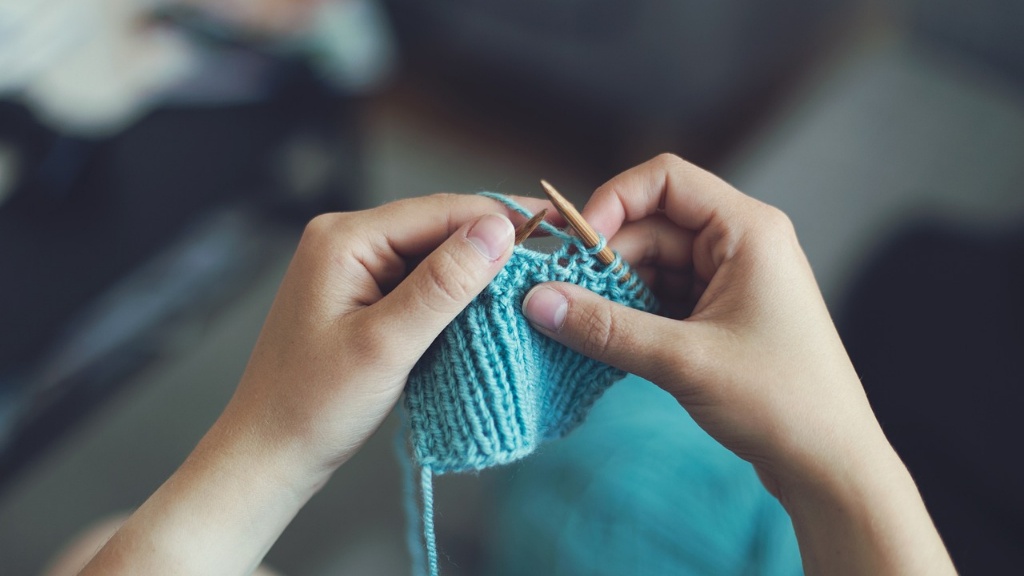Tools and Materials Needed
Making a t-shirt quilt without a sewing machine only requires a few basic tools and supplies. You will need scissors for cutting out the shapes and fabrics, an iron, adhesive fabric stabilizer, quilt batting and backing fabric. You may also find it helpful to have a cutting board, an acrylic ruler and a rotary cutter, as well as an extra pair of hands to help.
Planning and Layout
Once you have all the materials and tools ready, start by planning the size and layout of your quilt. Measure the size of your t-shirts to decide on the size of your quilt. Once the size is decided, cut any excess fabric and the seams off the t-shirts. Arrange the t-shirts in a pattern of your choice and secure them together avoiding any overlapping of fabric.
Stabilizing the Fabric
Stabilizing the fabric is essential before cutting it. This step will ensure that the fabric pieces don’t shrink or warp during the quilting process. Use an adhesive fabric stabilizer or mist to stabilize the t-shirt fabric before cutting it. You may also use a spray-on temporary adhesive.
Cutting and Layout of Fabric Pieces
Once the fabric pieces are stabilized, you need to cut them in the shapes as desired. Use an acrylic ruler and a rotary cutter to cut the fabric in the required size. The size of the pieces should be same for all the t-shirts for a neat finished project. Lay the cut pieces out together and arrange them in a pattern that you desire for the quilt.
Securing the Pieces Together
The pieces can be secured together without a sewing machine by using an iron and adhesive fabric stabilizer. Place the cut pieces one above the other and cover them with a thin sheet of baking paper or a pressing cloth. Iron the pieces together so that they stay in place. Make sure you iron the fabric along with the stabilizer to secure the pieces together well.
Quilting
Once the fabric pieces are cut, stabilized, and secured together, it’s time to think of quilting. For hand quilting, use a quilting hoop to keep the fabric in place. Start quilting by stitching the pieces together in an “X” shape. Sew the pieces together carefully, making sure the stitches are tight and the fabric layers stay in place. It takes a bit more time but the reward of a handmade quilt makes it worth the effort.
Adding the Backing
Once the quilt has been quilted, it’s time to add the backing. Cut out a piece of batting and fabric in the same size as the quilt. Place the batting on top of the quilt piece and secure it with adhesive stabilizer. Place the quilted fabric on the batting and pin them together. Start from the center and work your way out to make sure that the pieces are firmly secured together. Then, use an iron to press the pieces together in place.
Care and Maintenance
Once the quilt has been completed, make sure to follow a few simple steps for its care and maintenance. Wash your quilt in a washing machine on a gentle cycle. Hang the quilt in the shade to dry and then iron it with a steam setting. Doing this will ensure that your quilt remains in top condition and can be enjoyed for years to come.
Binding the Quilt
Once the quilt is complete, the next step is binding. Bind the quilt by sewing bias tape around the edges and then fold it to the back side of the quilt and secure it with an adhesive fabric stabilizer. You can also use a bias binding machine for this purpose, but in the absence of one, you can hand sew the bias tape in place. Make sure to use the same thread for binding and quilting for a neat and finished look.
Adding a Label
Adding a label at the back of the quilt is the final step in completing a beautiful quilt. This provides details about the maker and can be done with the help of a permanent fabric organza pen. Use this pen to write down the date, your name and the occasion for which the quilt is made. Labels are a nice touch and help in preserving your precious quilt for years to come.
Quilting Motifs, Patterns and Embellishments
You can also customize your quilt using different quilting motifs, patterns and embellishments such as embroidery, fabric paint, rhinestones and other materials. These can be hand stitched or machine stitched depending on the preference and the materials available. If you are creating a quilt as a gift, personalizing it with motifs and patterns always makes it extra special and memorable.
Fire Retardant Spray
Before using the quilt, make sure you spray it with fire retardant spray. This is especially important if the quilt is going to be used around open flames or heat sources such as fire places and heaters. Fire retardant spray should not be used on fabrics made of wool, rayon, silk or acetate.
Storage of the Quilt
When the quilt is not in use, make sure to store it in a cool, dry place and away from direct sunlight. Fold the quilt loosely, never tightly, and avoid storing in air tight containers which can attract moths and other pests. Whenever necessary, you’ll want to use a light vacuum cleaner to clean the quilt without risking damage to the fabric.



